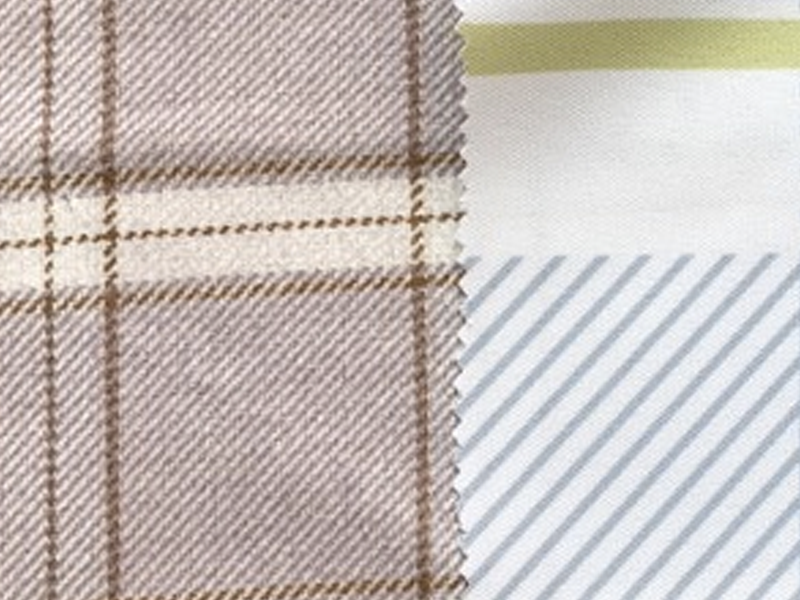Today, we are commencing a series on one of the most ubiquitous design styles: plaid. In this first post, we’ll follow plaid’s textile lineage all the way back to Scotland.
Terminology
Before we begin, we need to clear up some of the confusion surrounding the terms “plaid,” “tartan,” and “flannel.” This misunderstanding is partially due to differences in terminology between North America and the United Kingdom. It also stems from overlapping applications of terms relating to patterns and material garments.
When first popularized in the Highlands of Scotland, tartan referred to a patterned woven textile. Plaid, meanwhile, denoted a blanket-like garment, worn as outerwear, and often fashioned out of tartan fabric. Thus, in the UK, tartan is the predominant term. When tartan arrived in the Americas, the plaid garment had become defunct and mass production had moved away from the original textile mills. Consequently, the two terms came to be used interchangeably. Nowadays, plaid is the most widely used term in the US and Canada.
Then flannel enters into the mix. Flannel is a type of soft woven fabric, traditionally used for warmth and protection in the great outdoors. During the 90’s grunge era, the flannel shirt became a fashion staple. As these garments largely featured plaid designs, many people still mix up these terms today. However, technically, flannel is a fabric and plaid is a pattern.
Here at WeaveUp, we define tartan as a unique collection of traditional Scottish patterns and plaid as the overarching design category to which tartan belongs. Therefore, a plaid is any pattern that features colored stripes of varying thickness laid out in a specific pattern to form right angles.
Tartan
So let’s delve into the origins of the tartan. Back in the Highlands of Scotland, the resident weaver only had access to a limited range of colored yarns. For this reason, the ensuing tartan material developed into a visible regional identifier. Over time, each geographical clan adopted their own distinct tartan design, showcased primarily in their kilts.

“Buchanan”. Illustration by R. R. McIan, from James Logan’s . The Clans of the Scottish Highlands, 1845.
The tartan industry flourished until 1746 when the clan-aided Jacobite Uprising was crushed by the English army and King George II outlawed the iconic textile. Tartan would later regain prominence with the wave of emigrants that left for America in the 19th century. Over time, tartans have served as inspiration for a variety of subsequent plaid designs.
As the original weavers have long since passed into the folds of history, many tartans are now part of the public domain. However, more recent plaid designs, just like any textile pattern, may fall under copyright protection. For more information, check out the Scottish Tartan Register’s website.
We love how digitally produced plaids play with the traditional woven-like texture to create a sense of warmth and comfort. Now, with the ability to customize the color palette, you can personalize these patterns to fit your home décor and modern lifestyle.
Check out a few of our favorite tartan-inspired designs below and shop all our plaid fabrics here.
Check back next week for the second installment of our exploration of plaid, and catch up the entire Textile Design Guide series here.






Leave A Comment